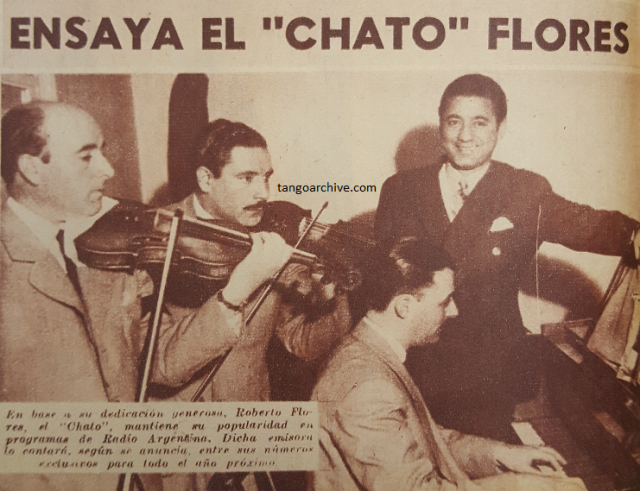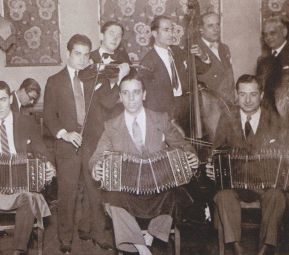“Milongueando” by Francisco Canaro y su Orquesta Típica with Ernesto Famá in vocals, 1939.
“Milongueando” by Francisco Canaro y su Orquesta Típica with Ernesto Famá in vocals, 1939.

Ernesto Famá
Singer and composer (August 18, 1908 – July 19, 1984)
His association with Francisco Canaro meant tours, radio, and theater plays, making his way up to fame possible.
Canaro’s popularity was great at its peak and Famá was part of this successful stage, one of the golden chapters of our tango.
Notwithstanding the number of recordings, his career was not long, only fourteen years in show business; at thirty-five, he was already retired from showbiz.
Listen and buy:
-
Amazon music
-
iTunes music
-
Spotify
We are happy to have a collaboration with the people from tangotunes.com from whom some of you may have heard, they do high-quality transfers from original tango shellacs.
It is the number 1 source for professional Tango DJs all over the world.
- Now they started a new project that addresses the dancers and the website is https://en.mytango.online
You will find two compilations at the beginning, one tango and one vals compilation in amazing quality.
The price is 50€ each (for 32 songs each compilation) and now the good news!
If you enter the promo code 8343 when you register at this site you will get a 20% discount!
Thanks for supporting this project, you will find other useful information on the site, a great initiative.
We have lots more music and history












